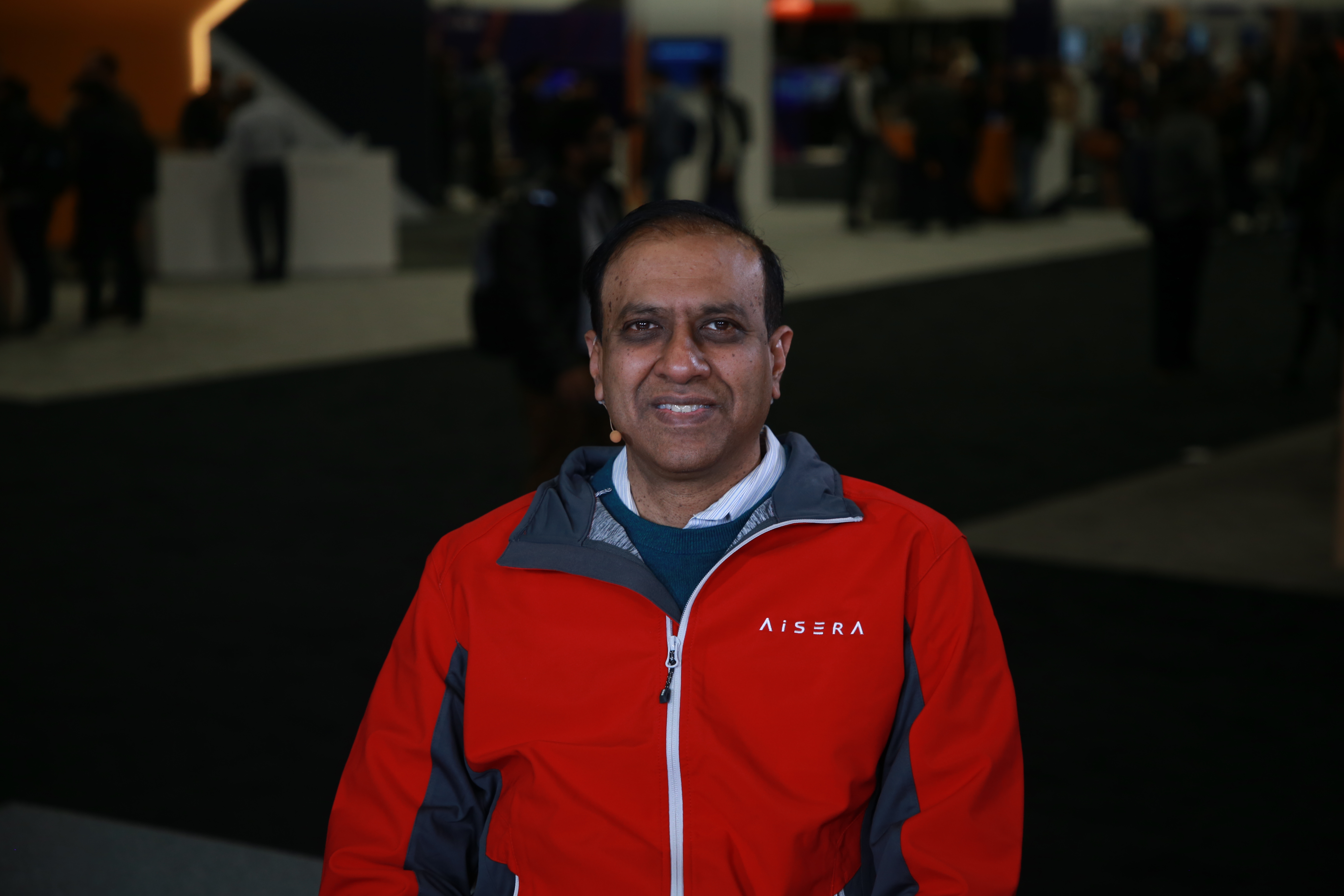 AI
AI
 AI
AI
 AI
AI
We’ve seen a multitude of buzzwords gain industry-wide relevance, from digital transformation to edge computing to Web3.
Championed by future-forward companies such as Aisera Inc., similar phrases including AI-native and AIOps might well join that list.
“Obviously, data is very key. The next layer is going to be called the system of intelligence. That’s where the artificial intelligence will play,” said Muddu Sudhakar (pictured), chief executive officer and investor at Aisera. “We talk cloud-native; it’ll be called AI-native. AI-native is a new buzzword, and it implies using the AI for customer service and IT operations. About observability, I call it AIOps, applying AIOps for good old IT operation management and cloud management.”
Sudhakar spoke with theCUBE industry analyst John Furrier during the recent AWS Summit San Francisco event, an exclusive broadcast on theCUBE, SiliconANGLE Media’s livestreaming studio. They discussed Aisera’s strategic movement in the AI for customer services space and how it’s augmenting employees and customers to take their operations to the next stage. (* Disclosure below.)
Backed by a whole host of Silicon Valley bigwigs, including Menlo Ventures Management L.P. and True Ventures, Aisera has raised over $100 million to date. The startup has also seen over 300% year-on-year growth over the past three years, according to Sudhakar.
“The space Aisera is going after is what I call applying AI for customer service. Think IT operations and IT help desks; the same place I used to work at ServiceNow. We are partners with ServiceNow to see how can we augment employees and customers with solutions like Salesforce and ServiceNow to take it to the next stage,” Sudhakar explained.
In the same way that the industry evolved toward polyglot databases, there’s an ongoing, steady process toward polyglot automation, according to Sudhakar. In his vision of the technology, organizations would implement automation as a core but also have automation simultaneously in other areas in their technology stack.
“That’s why you see MuleSoft and Salesforce buying rapid process automation companies,” he said. “So you’ll see all the SaaS companies, cloud companies having automation as a core. It’s like how you have a database and compute and sales and networking. You’ll also have automation as a layer embedded inside every stack.”
There’s something of a gold rush toward automation through machine learning and AI as organizations grasp its multiple benefits. This automation should be embedded into every area of a solutions organization’s operations, according to Sudhakar.
“You’ll see all the SaaS companies, cloud companies having automation as a core. So it’s like how you have a database and compute and sales and networking. You’ll also have automation as a layer embedded inside every stack.”
As the pivot away from the traditional market entry attack plan becomes increasingly apparent, investors and founders will begin to build their stacks on tools like Snowflake, in addition to AWS, according to Sudhakar.
“You build it on Amazon and Snowflake. Snowflake will become your data store. Snowflake will become your data layer. So I think that’s the next level of what companies trying to achieve,” he stated.
Today, entrepreneurs are skipping much of the grunt work and building large parts of their products on solutions such as Snowflake. Whatever they can’t build, they facilitate through a platform-as-a-service layer.
“It’ll reduce your product development. You’ll go to market, and you can use the Snowflake marketplace to drive your engagement,” Sudhakar said.
An unprecedented number of business processes are moving to the cloud from on-prem setups, and a new paradigm is emerging, dubbed “cloud-scale” by theCUBE host and SiliconANGLE Media’s founder John Furrier. The contemporary “lift-and-shift” movements are now making their way into IT operations, customer service, ticketing and even record management, and long may it continue, according to Sudhakar.
On the buying side of things, the spending trends have also changed positively toward favoring solutions startups, as Sudhakar identified with his personal experience at Aisera.
“I think enterprises, on the average, used to spend nothing with startups. It’s almost like 0% or 1%, “he said. “Today, most companies are already spending 20, 30% with startups. Can it go more? I think it can double in the next four, five years.”
This increased spending is being driven by fresh-thinking startups developing new standards in security and cloud app development. The training of AI and machine learning models toward stronger predictions and autonomy would be key to sustaining this growth, Sudhakar suggested.
Without a doubt, the overarching goal of every market entrant is to become a supercloud: driven by hyper-scale infrastructure and focused on deeper business integration and intrinsic digital transformation.
Here’s the complete video interview, part of SiliconANGLE’s and theCUBE’s coverage of the AWS Summit San Francisco event:
(* Disclosure: TheCUBE is a paid media partner for the AWS Summit San Francisco event. Neither Amazon Web Services Inc., the sponsor of theCUBE’s event coverage, nor other sponsors have editorial control over content on theCUBE or SiliconANGLE.)
Support our mission to keep content open and free by engaging with theCUBE community. Join theCUBE’s Alumni Trust Network, where technology leaders connect, share intelligence and create opportunities.
Founded by tech visionaries John Furrier and Dave Vellante, SiliconANGLE Media has built a dynamic ecosystem of industry-leading digital media brands that reach 15+ million elite tech professionals. Our new proprietary theCUBE AI Video Cloud is breaking ground in audience interaction, leveraging theCUBEai.com neural network to help technology companies make data-driven decisions and stay at the forefront of industry conversations.